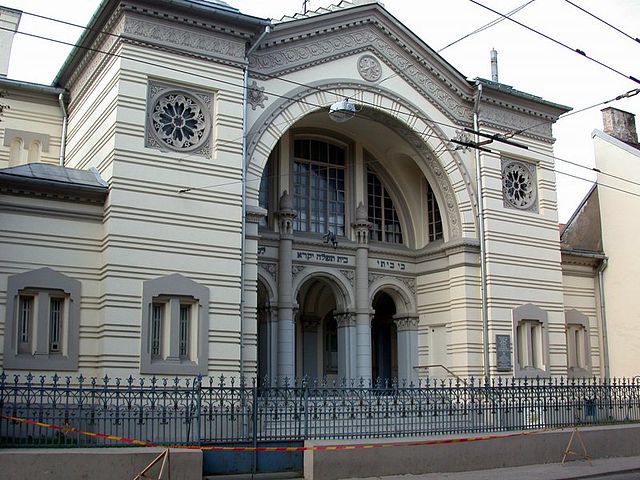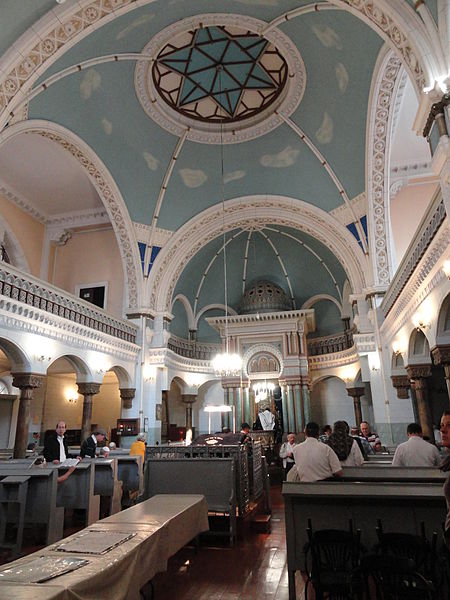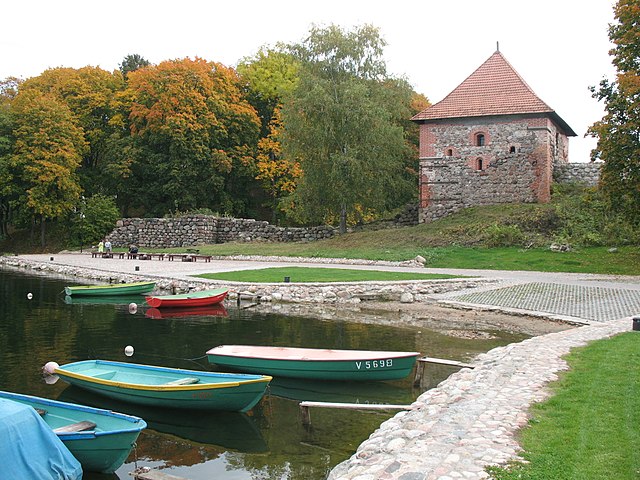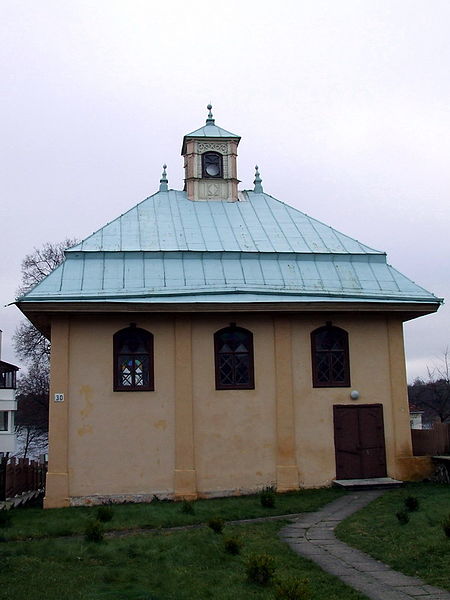History of the Jews in Lithuania
The history of the Jews in Lithuania spans the period from the 14th century to the present day. There is still a small community in the country, as well as an extensive Lithuanian Jewish diaspora in Israel, the United States and other countries.
The Choral Synagogue of Vilnius, the only synagogue in the city to survive the Nazi holocaust and post-war Soviet oppression.
Vilna Gaon Jewish State Museum
Interior of Synagogue of Vilnius
Trakai is a city and lake resort in Lithuania. It lies 28 kilometres west of Vilnius, the capital of Lithuania or just 7 kilometres from the administrative limits of the Lithuanian capital city. Because of its proximity to Vilnius, Trakai is a popular tourist destination. Trakai is the administrative centre of Trakai district municipality. The city is inhabited by 5,357 people, according to 2007 estimates. A notable feature of Trakai is that the city was built and preserved by people of different nationalities. Historically, communities of Karaims, Tatars, Lithuanians, Russians, Jews and Poles lived here.
Image: Traku pilis by Augustas Didzgalvis
Image: Trakai Galve 20
Image: Trakai, Lithuania panoramio
Image: Karaite kenesa in Trakai, Lithuania







